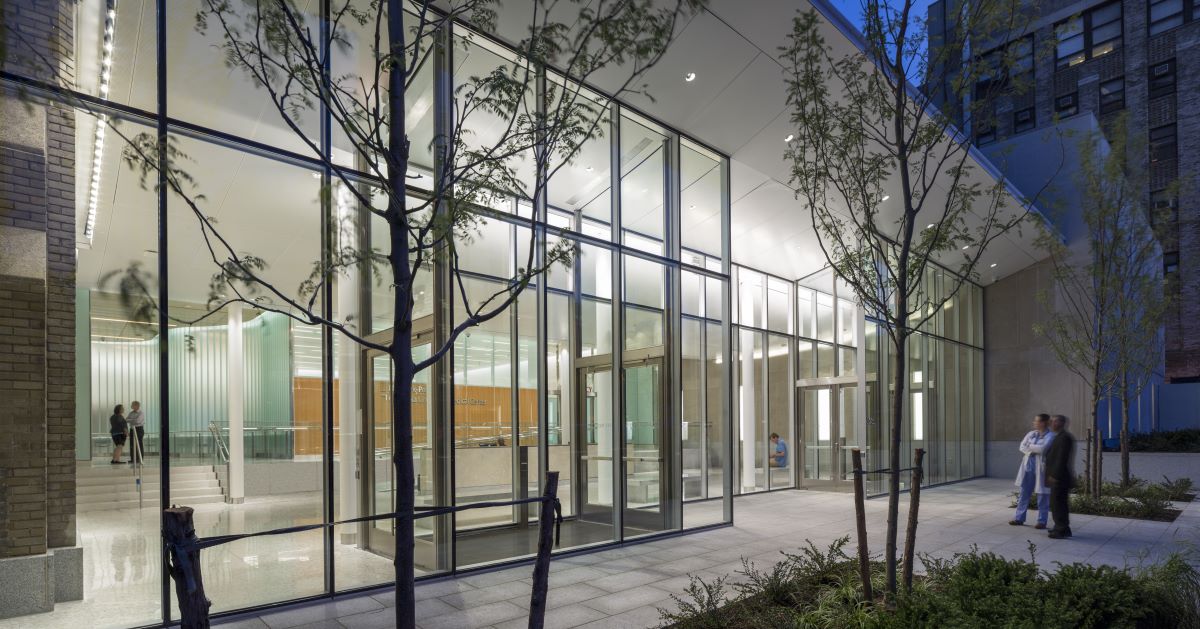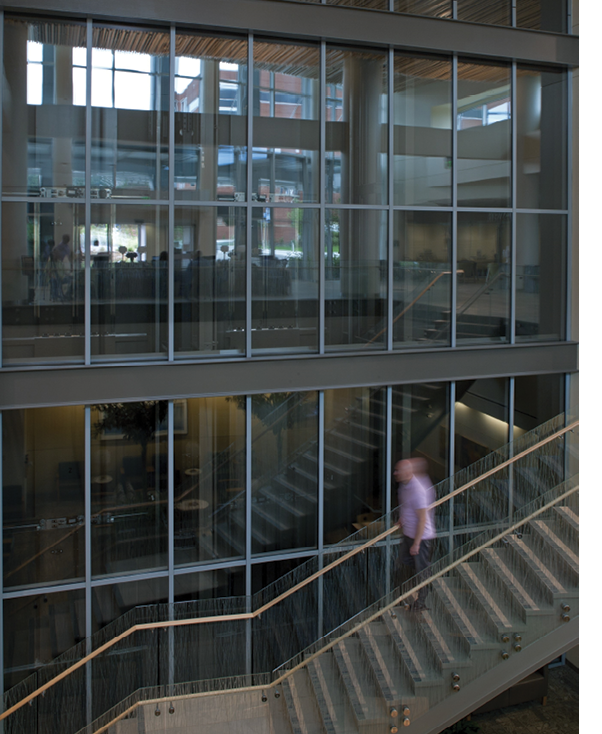Daylight…Stat
Using glass curtain walls in healthcare settings to promote healing and restorative environments


Daylighting is often central to occupant comfort. In healthcare settings, naturally lit interiors can also support patient outcomes. From lowering perceived pain levels to regulating circadian rhythms, daylight can shorten patient stays. It can also help keep medical staff alert and comfortable.
Bringing daylight into a building’s interior requires the finesse of balancing access, glare, potential for overheating and more.
Among daylighting options, transparent glass curtain walls are ideal for areas where it is desirable to optimize daylight, soften transitions between spaces and facilitate views of neighboring spaces and the outside—a quality often held in tandem with the benefits of daylighting. From façades to interiors, these systems can meet several building demands, including fire- and life-safety requirements, while supporting a well-lit, patient-focused interior.
Daylit entrances and lobbies with exterior curtain walls
Exterior glass curtain walls allow light to flood the perimeter areas of healthcare facilities, including entrances, lobbies, waiting areas and more. Providing adequate daylight within hospital units can help reduce perceived stress and pain levels, as indicated in a 2005 study in Psychosomatic Medicine titled “The Effect of Sunlight on Postoperative Analgesic Medication Use: A Prospective Study of Patients Undergoing Spinal Surgery.” A comparable 2022 study from the Journal of Interior Design, “Recognition Memory for Interior Spaces with Biomorphic or Non-Biomorphic Interior Architectural Elements,” also found that environmental factors, including daylight, reduced anxiety for patients in waiting areas before surgery.
Daylight’s benefits were not lost on the design team behind the Morgan Stanley Adult Emergency Room expansion at New York Presbyterian Hospital. The department sees over 80,000 patients a year, so creating a lobby that could contribute to the mental well-being of patients and their families was crucial.
The architects planned an exterior glass curtain wall system comprised of 18.5-foot spans of narrow-profile steel framing.
Since steel has approximately three times the strength of aluminum, it maximizes glazing panel size, thereby increasing the amount of daylight allowed in. This system contributes to the well-being of the admitted occupants and the medical staff.
To balance access and glare, the design team used an interior channel glass system to allow the light to diffuse evenly into the treatment areas—as can other decorative glass types. This hospital showcases how glass curtain walls and other glazing assemblies can benefit hospital interiors.
Behind the façade: Benefits of interior curtain walls
Interior curtain wall assemblies allow light transfer between perimeter areas and those deeper inside. They can support visual connectivity and intuitive wayfinding when placed around staircases. For healthcare settings that use smaller, zoned HVAC units, interior glass curtain walls can provide comparable U-values to opaque materials while allowing light transfer. This supports more energy-efficient operation. Interior curtain walls can also be fire-rated to meet building code requirements.
For example, to meet code requirements for means of egress without sacrificing the benefits of interior curtain walls, the architectural firms behind Dally Tower at MultiCare Good Samaritan Hospital encased the central elevator and stairwell with a fire-rated glass curtain wall. This allowed light from exterior windows and skylights above the stairwell to flow into areas deep within the building. In addition to its fire-resistive rating, this multi-story, steel-framed system also provided a close visual match to adjacent, non-rated assemblies for a seamless design aesthetic.
Elevating interiors and supporting patient outcomes
Designing with transparent glass curtain walls can help create spaces that support patient recovery timelines and overall mental well-being. These systems can also provide daylight access for healthcare professionals to regulate cortisol, melatonin and serotonin secretions, supporting regular circadian rhythms and improving mood.
Curtain walls with large spans of glass also support beautifully designed spaces that feel connected to their surroundings. For large curtainwall spans, designers can also incorporate internal louvers or photovoltaic glass if a project has particular performance requirements. These systems help create pleasantly restorative healthcare spaces.
Understanding how glass curtain walls fit within the function of a hospital will help glazing professionals successfully recommend and install systems for these project types.


